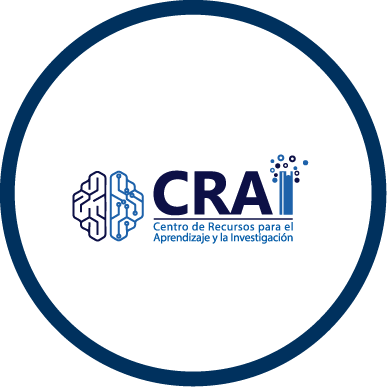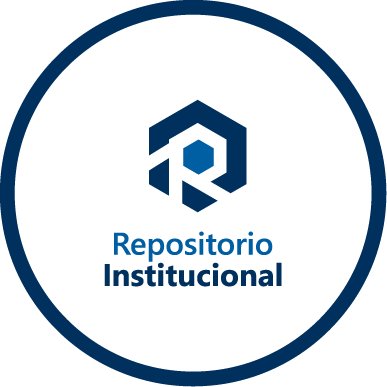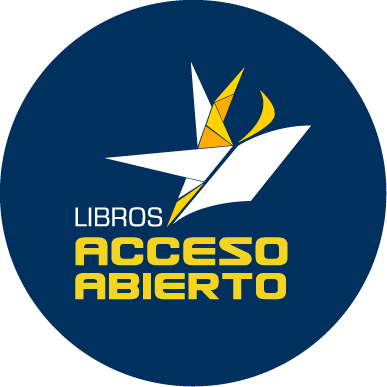Desarrollo De Un Prototipo De Gafas Basado En Movimientos Oculares Sacádicos Provenientes De La Señal Electrooculografía (EOG) Para La Asistencia Digital De Personas Con Discapacidad Motriz Severa
Disability refers to a condition that can be attributed to a wide variety of factors, whether external or congenital in origin. Among these factors, traumatic injuries, infections, spinal cord diseases, and even complications resulting from medical procedures stand out. These conditions significantl...
Saved in:
| Main Author: | |
|---|---|
| Other Authors: | |
| Format: | Tesis/Trabajo de grado - Monografía - Pregrado |
| Language: | Español |
| Published: |
Universidad Antonio Nariño
2025
|
| Subjects: | |
| Online Access: | https://repositorio.uan.edu.co/handle/123456789/12416 |
| Tags: |
Add Tag
No Tags, Be the first to tag this record!
|
| _version_ | 1831062958265860096 |
|---|---|
| author | Patiño Sepúlveda, Laura Michell |
| author2 | Quinayas Burgos, Cesar Augusto |
| author_facet | Quinayas Burgos, Cesar Augusto Patiño Sepúlveda, Laura Michell |
| author_sort | Patiño Sepúlveda, Laura Michell |
| collection | DSpace |
| description | Disability refers to a condition that can be attributed to a wide variety of factors,
whether external or congenital in origin. Among these factors, traumatic injuries, infections,
spinal cord diseases, and even complications resulting from medical procedures stand out.
These conditions significantly affect the quality of life of those who experience them,
limiting their autonomy and mobility. For this reason, the development of assistive
technologies is essential to mitigate such limitations and contribute to improving the lives
of people with disabilities.
In this context, one of the most promising emerging technologies is the use of
electrooculography (EOG)-based glasses, which enable the intuitive control of devices such
as wheelchairs by tracking the user's eye movements. These glasses represent an innovative
solution that promotes the independent mobility of people with motor disabilities,
significantly enhancing their interaction with their surroundings.
The main objective of this project is the design and development of a rehabilitation
system based on EOG glasses. This system will not only capture and process the signals
generated by eye movements but also adapt them for different applications in the field of
rehabilitation. In doing so, it aims to provide a technological tool that facilitates mobility,
improves quality of life, and promotes the inclusion of people with reduced mobility in their
daily activities |
| format | Tesis/Trabajo de grado - Monografía - Pregrado |
| id | repositorio.uan.edu.co-123456789-12416 |
| institution | Repositorio Digital UAN |
| language | Español |
| publishDate | 2025 |
| publisher | Universidad Antonio Nariño |
| record_format | dspace |
| spelling | repositorio.uan.edu.co-123456789-124162025-02-19T15:09:29Z Desarrollo De Un Prototipo De Gafas Basado En Movimientos Oculares Sacádicos Provenientes De La Señal Electrooculografía (EOG) Para La Asistencia Digital De Personas Con Discapacidad Motriz Severa Patiño Sepúlveda, Laura Michell Quinayas Burgos, Cesar Augusto Discapacidad EOG gafas EOG Disability EOG EOG glasses Disability refers to a condition that can be attributed to a wide variety of factors, whether external or congenital in origin. Among these factors, traumatic injuries, infections, spinal cord diseases, and even complications resulting from medical procedures stand out. These conditions significantly affect the quality of life of those who experience them, limiting their autonomy and mobility. For this reason, the development of assistive technologies is essential to mitigate such limitations and contribute to improving the lives of people with disabilities. In this context, one of the most promising emerging technologies is the use of electrooculography (EOG)-based glasses, which enable the intuitive control of devices such as wheelchairs by tracking the user's eye movements. These glasses represent an innovative solution that promotes the independent mobility of people with motor disabilities, significantly enhancing their interaction with their surroundings. The main objective of this project is the design and development of a rehabilitation system based on EOG glasses. This system will not only capture and process the signals generated by eye movements but also adapt them for different applications in the field of rehabilitation. In doing so, it aims to provide a technological tool that facilitates mobility, improves quality of life, and promotes the inclusion of people with reduced mobility in their daily activities La discapacidad se refiere a una condición que puede atribuirse a una amplia variedad de factores, ya sean de origen externo o congénito. Entre estos factores destacan las lesiones traumáticas, infecciones, enfermedades de la médula espinal e incluso complicaciones derivadas de procedimientos médicos. Estas condiciones afectan significativamente la calidad de vida de quienes las padecen, limitando su autonomía y movilidad. Por ello, el desarrollo de tecnologías asistenciales resulta esencial para mitigar dichas limitaciones y contribuir a mejorar la vida de las personas con discapacidad. En este contexto, una de las tecnologías emergentes más prometedoras es el uso de gafas basadas en electrooculografía (EOG), las cuales permiten el control intuitivo de dispositivos como sillas de ruedas mediante el seguimiento de los movimientos oculares del usuario. Estas gafas representan una solución innovadora que promueve la movilidad independiente de personas con discapacidades motoras, mejorando significativamente su interacción con el entorno. El presente proyecto tiene como objetivo principal el diseño y desarrollo de un sistema de rehabilitación basado en gafas EOG. Este sistema no solo permitirá captar y procesar las señales generadas por los movimientos oculares, sino que también las adaptará para diferentes aplicaciones en el ámbito de la rehabilitación. Con ello, se busca brindar una herramienta tecnológica que facilite la movilidad, mejore la calidad de vida y promueva la inclusión de las personas con movilidad reducida en sus actividades diarias. Ingeniero(a) Biomédico(a) Pregrado Presencial Monografía 2025-02-19T15:09:28Z 2025-02-19T15:09:28Z 2025-02-19 Tesis/Trabajo de grado - Monografía - Pregrado Estudio correlacional http://purl.org/coar/resource_type/c_46ec http://purl.org/redcol/resource_type/PIC http://purl.org/coar/version/c_b1a7d7d4d402bcce https://repositorio.uan.edu.co/handle/123456789/12416 Español Attribution-NonCommercial-NoDerivs 2.5 Colombia http://creativecommons.org/licenses/by-nc-nd/2.5/co/ info:eu-repo/semantics/openAccess http://purl.org/coar/access_right/c_abf2 pdf application/pdf application/pdf application/pdf Universidad Antonio Nariño Ingeniería Biomédica Facultad de Ingeniería Mecánica, Electrónica y Biomédica Popayán - Alto Cauca instname:Universidad Antonio Nariño Gonzalez-Usigli, H. A. (s/f). Corea, atetosis y hemibalismo. Manual MSD versión para público general. Centro Nacional de Tecnología y Accesibilidad (CENTAC). Tecnologías Pacheco Bautista, D., Algredo Badillo, I., De la Rosa Mejía, D., & Heredia Jiménez, A. H. (2014). Interfaz humano-computadora basada en señales de electrooculografía para personas con discapacidad motriz. RECIBE. Revista electrónica de Computación, Informática, Biomédica y Electrónica, 2. Allwyn Gnanadas, A., Aswin, S., Hariharan, A., Karthik, S., & Manibalan, B. (s/f). Wheelchair movements control using eog. Philstat.org. Electrónic, I. E. Y. (s/f). UNIVERSIDAD DE OVIEDO. Uniovi.es. Rojas, D. C. M. (s/f). CONTROL DE MOUSE A TRAVÉS DE SEÑALES EOG Y ALGORITMOS DE BOOSTING. Edu.co. Javier Bohórquez, J., Steven, J., & Hernández, A. (s/f). CONTROL DEL MOVIMIENTO DE UN ROBOT MÓVIL A CONTROL REMOTO A TRAVÉS DE SEÑALES EOG CONTROL OF THE MOVEMENT OF A MOBILE ROBOT TO REMOTE CONTROL THROUGH EOG SIGNALS. S. Aungsakul, A. Phinyomark, P. Phukpattaranont, and C. Limsakul, “Evaluating feature extraction methods of electrooculography (EOG) signal for human-computer interface,” in Procedia Engineering, 2012. View of wheelchair movements control using eog. (s/f). Philstat.org. David Escobar-Valencia, M., Fernando, J., July, M., & Camperos, A. G. (s/f). Scaled electric wheelchair controlled by electrooculographic signals. Webology.org. |
| spellingShingle | Discapacidad EOG gafas EOG Disability EOG EOG glasses Patiño Sepúlveda, Laura Michell Desarrollo De Un Prototipo De Gafas Basado En Movimientos Oculares Sacádicos Provenientes De La Señal Electrooculografía (EOG) Para La Asistencia Digital De Personas Con Discapacidad Motriz Severa |
| title | Desarrollo De Un Prototipo De Gafas Basado En Movimientos Oculares Sacádicos Provenientes De La Señal Electrooculografía (EOG) Para La Asistencia Digital De Personas Con Discapacidad Motriz Severa |
| title_full | Desarrollo De Un Prototipo De Gafas Basado En Movimientos Oculares Sacádicos Provenientes De La Señal Electrooculografía (EOG) Para La Asistencia Digital De Personas Con Discapacidad Motriz Severa |
| title_fullStr | Desarrollo De Un Prototipo De Gafas Basado En Movimientos Oculares Sacádicos Provenientes De La Señal Electrooculografía (EOG) Para La Asistencia Digital De Personas Con Discapacidad Motriz Severa |
| title_full_unstemmed | Desarrollo De Un Prototipo De Gafas Basado En Movimientos Oculares Sacádicos Provenientes De La Señal Electrooculografía (EOG) Para La Asistencia Digital De Personas Con Discapacidad Motriz Severa |
| title_short | Desarrollo De Un Prototipo De Gafas Basado En Movimientos Oculares Sacádicos Provenientes De La Señal Electrooculografía (EOG) Para La Asistencia Digital De Personas Con Discapacidad Motriz Severa |
| title_sort | desarrollo de un prototipo de gafas basado en movimientos oculares sacadicos provenientes de la senal electrooculografia eog para la asistencia digital de personas con discapacidad motriz severa |
| topic | Discapacidad EOG gafas EOG Disability EOG EOG glasses |
| url | https://repositorio.uan.edu.co/handle/123456789/12416 |
| work_keys_str_mv | AT patinosepulvedalauramichell desarrollodeunprototipodegafasbasadoenmovimientosocularessacadicosprovenientesdelasenalelectrooculografiaeogparalaasistenciadigitaldepersonascondiscapacidadmotrizsevera |




